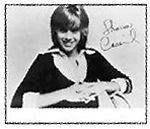Friday, Feb. 26—New York City
10 am: Meeting with my editor to discuss my current project, In the Mix. “What exactly is this book about?” he inquires. I explain that DJ culture is the best meta-phor for how the whole world should operate. That there are a million types of DJs, but we all perform the same feat: communicating with an audience by manipulating prerecorded sound. By juxtaposing interviews with the Chemical Brothers, Afrika Bambaataa, Danny Tenaglia, and Grooverider, all discussing similar ideas, I hope readers will recognize this commonality, and relate it to other, profound topics.
I sound like I’m about to burst into a chorus of “It’s a Small World.” I’ve got to distill these ideas further.
11:40 am: Twenty-minute record-shopping spree. I want the jams the town is buzzing to: Cevin Fisher’s “(You’ve Got Me) Burnin’ Up,” Armand Van Helden’s “You Don’t Know Me.” I snag ’70s and ’80s gems I’m tired of combing the used bins for. Someday my grandchildren will ask where all my money went, and I’ll just point to my records.
Noon: British drum and bass diva DJ Rap, who’s in town promoting her forthcoming Learning Curve (Higher Ground/ Columbia), had a nomadic childhood. Music was the one constant. Now she can’t imagine life without her recording studio and turntables. Nothing feels better after a brawl with your boyfriend than hopping on the wheels of steel. “I don’t know what I’d have done otherwise . . . ” she muses. “Keyed his car, I suppose.”
2:15 pm: Lunch with DJ DB at the cafe in the Museum of Modern Art. We never get around to discussing his new drum and bass compilation Shades of Technology (on F-111/Warner Bros.). “I don’t think there’s anything that distinguishes a great drum and bass DJ that doesn’t distinguish any DJ,” he stresses. “A great DJ is someone who has that indefinable balance of entertainer, educator . . . and flirt—basically those three things.”
4:10 pm: Kurtis Mantronik, the hip-hop hero of “King of the Beats,” recounts the block parties he witnessed in the Bronx “back in the day.” He describes hot-wiring his first primitive mixing station, and inadvertently creating a circuit, so the gear would heat up like a stove coil and burn him. This is fantastic material!
His cell phone rings, and I check how much recording time is left. The tape is jammed. I’ve lost 45 minutes of the interview.
6:25 pm: A Greek chorus of gold records—Public Enemy, New Order—shines down from the walls of the studio where I meet Prince Paul, who produced rap groundbreakers including Gravediggaz and De La Soul, not to mention his own Prince of Thieves (Tommy Boy). Paul tells me that old-school jocks would soak the labels off records, put them in misleading sleeves, so rivals couldn’t bite your tunes. We grouse about how there’s not enough diversity in programming these days. He decides that on his upcoming tour, he’s gonna spin a brief set of nothing but classic beats.
7:50 pm: Anita Sarko, who’s spun at such NYC landmarks as Mudd Club and Palladium, recounts anecdotes about patrons walking up as she cued up tunes, and asking her where they could find the DJ. “Because a woman couldn’t possibly DJ!” she cackles sarcastically. Pat Boone, Ministry, samba, and hip-hop all popped up in her sets. The brats who grew up into the Beastie Boys were her groupies. But when The New York Times interviewed Sarko for a piece on “the female DJ phenomenon” (yawn), the scribe had the gall to admit never having heard of her.
We can’t let people put us in boxes, she reiterates: You’re a woman DJ, you’re a black painter, you’re a gay writer. If we accept those tags, we’re just reinforcing barriers.
I want to call my editor right now and tell him I can explain what this book is about.





